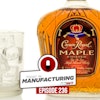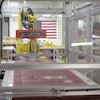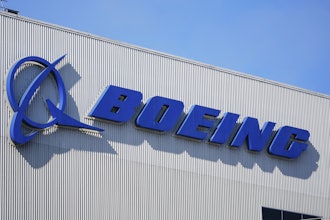NEW YORK (AP) — Deloitte today released the findings of an in-depth benchmarking analysis of the North American food and beverage processing industry and the results reveal an industry transformed. Amid a dramatically different competitive and economic landscape Canadian processors have closed the long-standing operating margin gap with their U.S. counterparts. However, to be successful in the future, Canadian processors will need to be aligned with today's new market realities.
Benchmarking for Success 2009 is an in-depth analysis of food and beverage processors across North America. The report features analysis on industry performance, subsector performance, top quartile performance, and perspectives on important issues such as food safety, the food retail environment, and merger & acquisition activity. It also features key success factors to help food and beverage companies remain competitive.
Of particular note, the study reveals Canadian processors have narrowed the long-standing performance gap with their U.S. counterparts. In 2008, Canadian and American processors performed equally on EBITDA (earnings before interest, taxes, depreciation and amortization) at about 10% of sales revenue. This represents a substantial improvement from the 7% margin advantage enjoyed by the U.S. group in 2001.
"The findings of this year's study are encouraging for Canadian processors in that they have closed a long standing margin gap with their American counterparts," says Stephen Brown, National Leader, Consumer Products Industry, Deloitte. "Closing the gap with the United States is the good news. The bad news is that the industry as a whole is generally declining in profitability."
As a result of challenging economic conditions over the last year, both Canadian and American processors experienced a decline in overall profitability. In 2008, Canadian processors' return on investment (ROI) fell from a 2006 high of 20% to 14% in 2008.
"As the cost of raw materials, labour and other inputs have all risen, it is not surprising that processors on both sides of the border are reporting a decrease in profitability," explains Brown. "However, rising costs are particularly problematic for Canadian processors as they have difficulty passing these increases on to Canada's powerful food retailers."
Different formula for success in Canada versus the United States
The study revealed that the top performers in the United States are large companies that enjoy significantly higher levels of profitability than the industry average. In Canada the top performers tend to be much smaller than their U.S. counterparts and have less debt than their Canadian peers. When looking at sales growth rates, the Canadian companies that are growing the fastest are larger than the Canadian industry average, whereas in the United States the fastest-growing companies are smaller than the U.S. peer group.
Future success dependent on alignment with new market realities
In the past, processors' success was based around a simpler business model that focused on manufacturing, logistics, customer service and low prices. However, future success will be based on consumer insights, brand management, product development and innovation.
"To achieve alignment with the future requirements, companies need to drive change throughout the organization and reduce the focus on things that were historically important but are less important in today's market," says Brown.
Concerns about food safety are still high
In recent years, North America has experienced several high profile food-safety incidents that have spanned a range of processing sectors and have originated from within Canada, the United States and abroad. It is not surprising that today food safety is top of mind with consumers. The report also reveals that 83% of consumers can name a product that was recalled due to safety concerns in the last two years; 76% of consumers report they are more concerned today than they were five years ago about the food they eat; 57% of consumers have stopped eating a particular product because it was permanently or temporarily recalled. In Canada, food safety concerns are widespread among food processors with 50% of Canadian survey respondents taking concrete measures towards improving food safety in 2008—either working towards a recognized safety certification and/or process improvement.
How to remain competitive in a global industry
Although it is reassuring to see how the Canadian food and beverage sector narrowed the performance gap with their U.S. counterparts in 2008, it is important that Canadian processors do not rest on their laurels. Today's supply chain is becoming increasingly global in nature and it is imperative that Canadian processing organizations look beyond their regional and national borders in measuring performance and developing competitive strategy.
Here are three key success factors that will help Canadian food and beverage processors remain competitive:
- Aggressively manage costs. Volatile input costs and currency exchange rates, an increasingly cost-conscious consumer and competition with low-cost regions make cost containment more important than ever before. While Canadian companies have made tremendous progress closing the gap with their American counterparts, the playing field continues to expand with companies across the globe competing for the North American consumer dollar. The ability to offer competitively priced products is now more important than ever.
- Take safety seriously. Consider obtaining the endorsement of a recognized food safety certification. Although, food safety has historically been viewed as a cost of doing business, companies with trusted delivery capabilities will increasingly be able to leverage this advantage to create growth opportunities. In future years, these endorsements may become a requirement to serve the biggest customers.
- Look for growth opportunities abroad. Although the United States is still the largest foreign market for Canadian processors, with an economy hit hard by the current economic downturn and rising calls for greater protection from foreign competition, the United States may not continue to be the reliable market it has previously been for Canadian food and beverage companies. Organizations that pursue growth beyond U.S. borders may well end up in a better competitive position than those which do not.
About Benchmarking for Success 2009
Benchmarking for Success 2009 is an in-depth analysis of the state of the North American food and beverage processing industry. The study analyzed 76 food and beverage processors (of which approximately one-third are Canada-based) and measures the performance between Canada's food and beverage processors and their U.S. counterparts for the fiscal year ending in 2008. While showcasing notable industry trends, the report also features analysis on subsector performance, top quartile performance and perspectives on food safety, the food retail environment, and merger & acquisition activity. To download a copy of this report, visit Deloitte.ca.
About Deloitte
Deloitte, one of Canada's leading professional services firms, provides audit, tax, consulting, and financial advisory services through more than 7,700 people in 57 offices. Deloitte operates in Quebec as Samson Belair/Deloitte & Touche s.e.n.c.r.l. Deloitte & Touche LLP, an Ontario Limited Liability Partnership, is the Canadian member firm of Deloitte Touche Tohmatsu. Deloitte refers to one or more of Deloitte Touche Tohmatsu, a Swiss Verein, and its network of member firms, each of which is a legally separate and independent entity. Please see www.deloitte.com/about for a detailed description of the legal structure of Deloitte Touche Tohmatsu and its member firms.


















